About Cancer: The Top 13 Things You Need To Know
1. What are The Most Common Cancers?
With over 100 different kinds of cancers, cancer is the second leading cause of death in the United States following heart disease. Although doctors and researchers don’t know for certain what causes most types of cancer, today, cancer treatments help many people and the survivor rate continues to rise. There are many facts one should know about cancer, including the causes, cancer types and treatment.
The American Cancer Society reports some interested stats about cancer. In the U.S. there were an estimated 1,658,370 new cancer cases diagnosed and 589,430 in 2015. This includes people from children to adults, and both genders.
According to the National Cancer Institute, the 12 most common cancers are:
- Breast
- Lung
- Prostate
- Colorectal
- Bladder
- Melanoma
- Non-Hodgkin’s Lymphoma
- Thyroid
- Kidney
- Leukemia
- Endometrial
- Pancreatic
2. Why is Cancer Called Cancer?
 Cancer is the broad term for a collection of life-threatening diseases. It is caused by an uncontrolled growth of abnormal cells in the body. The term “cancer” is derived from the Latin term for “crab” for two main reasons:
Cancer is the broad term for a collection of life-threatening diseases. It is caused by an uncontrolled growth of abnormal cells in the body. The term “cancer” is derived from the Latin term for “crab” for two main reasons:
- Like a crab, cancer cells are often irregularly shaped.
- Also, like a crab, cancers cells grab hold and don’t let go.
3. How does Cancer Cause Harm the Body?
Cancer begins when abnormal cells multiply without stopping or spreading to the surrounding areas. These abnormal cells crowd out the normal cells. Without enough normal cells, the body can’t function as well.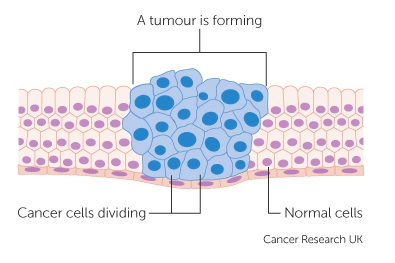
Cancers can grow in any part of the body. While many cancers are masses of tissue, or tumors, other cancers of the blood, such as leukemias, typically do not become solid tumors.
Cancer harms your body when these abnormally altered cells grow uncontrollably to form malignant tumors and interfere with the nervous, circulatory, and digestive systems. Tumors can also release hormones that impact the body function. In the case of blood cancers, like leukemia, cancer inhibits normal blood functioning as a result of the abnormal cell division in the blood stream.
Cancer begins when abnormal cells multiply without stopping or spreading Share on X
4. What is different about Cancer cells in comparison to normal cells?
Cancer cells are unlike normal cells primarily in the way they grow, spread, function, and relate to the immune system.
a. Cancer cells grow constantly and spread
Normal cells divide, stop growing, and then die when they are old, damaged, or no longer needed. New cells then take their place. However with cancer cells, this process doesn’t happen. Instead the cells continue to multiply and even when damaged or old, they don’t die when they aren’t needed anymore. Also, new cells grow are born that aren’t needed.
There are signals in normal cells that tell the cells to stop dividing or determine when it’s time for them to die because they are no longer needed. Cancer cells ignore these signals so their growth continues.
b. They differ by the functions they perform
Another important difference is that cancer cells aren’t as specialized as normal cells. Normal cells have specific functions in the body, such as growing your skin or creating your blood. But cancer cells don’t do this. Because of this lack of specialization, cancer grows continuously without stopping.
There are also cancer cells that can take control of the normal cells and blood vessels surrounding the tumor. This is called the microenvironment. The cancer cells can entice normal cells to create blood vessels for the sole purpose of giving the tumor the nutrients and oxygen it needs to grow, multiply, and stay alive.
c. They interact differently with the immune system
Cancer cells have the ability to evade the immune system. The immune system uses tissue, organs, and white blood cells which are designed to keep the body healthy by fighting infections and other diseases. The immune system also protects the body by getting rid of abnormal or damaged cells.
However, there are cancer cells that avoid being destroyed by the immune system. Cancer cells may also be able to stop the immune system from destroying other cells.
5. What are Tumors?
Tumors are the lumps or growths that can lead to cancer. Although you may have a tumor in the body, not all tumors are cancerous.
The lumps are either benign, meaning not cancerous, or malignant, meaning it is cancer. There are some types of cancers that don’t form a tumor. For example, leukemia is cancer of the blood, and there is no tumor. With leukemia the cancer grows in the cells of the blood or cells of other areas of the body.
Doctors take a small sample of the tumor and examine it further to determine if it is cancer. This is called a biopsy, and is a diagnostic method for cancer.
Although you may have a tumor in the body, not all tumors are cancerous. Share on X
6. How does Cancer Arise?
An interesting fact about cancer is that it may begin as a result of a number of factors, including genetic, environmental, and lifestyle.
a. Genetic factors
 Cancer starts in the genes. This is why experts consider cancer a genetic disease. Cancer is caused by changes to the genes that control how cells behave in the body. These changes include how the cells grow and divide.
Cancer starts in the genes. This is why experts consider cancer a genetic disease. Cancer is caused by changes to the genes that control how cells behave in the body. These changes include how the cells grow and divide.
There are several reasons why the genes change how cells function. In some cases, the genetic changes are inherited from your parents. Familial cancers only account for 10% of cancer cases. In the other cases, cancer is caused by errors or mutations in cells when they divide. These errors occur during life due to damage to the DNA.
Every patient has a different type of genetic change within the cells. Some of these changes may have caused the cancer. Other changes are the result of the cancer. Further, cancer cells have more genetic changes than normal cells. Even as the cancer grows, there are additional genetic changes. The different cells within a tumor may have various genetic changes. This means each person’s cancer is unique.
 b. Environmental factors
b. Environmental factors
Cancer may also have an environmental origin, which include exposure to:
- sun’s ultraviolet rays
- radiation,
- cigarette smoke or tobacco
- certain toxic chemicals
- outdoor air pollution
- drinking water contaminated with arsenic
c. Lifestyle factors
 There are also internal factors such as lifestyle behaviors that increase a person’s risk for cancer. These include:
There are also internal factors such as lifestyle behaviors that increase a person’s risk for cancer. These include:
- smoking cigarettes
- drinking alcohol excessively
- having a poor diet
- being obese
- not being physically active
Taking immunosuppressive medications may also increase your risk for cancer.
d. Other factors
Certain types of infections may increase your risk of cancer as well. These include HPV (human papillomavirus), hepatitis B, hepatitis C and Epstein-Barr virus. Certain diseases, such as diabetes, also increase risk.
7. What do The Stages of Cancer Mean?
If someone has been diagnosed with cancer of any kind, “stages” is a word that they are going to hear throughout your diagnoses and treatment.
The term “stage” is used to define the extent of the cancer. It identifies the size of the tumor and whether or not it has spread to other areas of their body.
Identifying cancer in stages helps the treating team in a number of ways.
- It helps them understand how serious your cancer is.
- Allows them to identify your chances of survival.
- Helps them determine the best treatment team.
- Enables them to identify the clinical trials that may be potential treatment options.
Cancer is referred to by the stage it was given at the time of diagnosis, even if the cancer spreads or grows. The stage of the cancer never changes, even though the cancer itself may change overtime. Any changes will be added to the original stage your cancer received upon diagnoses.
Cancer is referred to by the stage it was given during diagnosis. The stage never changes Share on X
8. How are the Stages of Cancer Determined?
Your oncologist can use several tests and procedures to determine the stage of the cancer, including:
- Imaging such as X-rays, MRI scans, CT scans
- Physical examination to examine the tumor and the lymph nodes
- Lab tests
Systems Used to Describe the Stages of Cancer
There are several types of staging systems. For many types of cancer, the TNM staging system is used to describe the stage, while other staging systems may be used for a specific or a particular type of cancer.
The majority of staging systems provide pertinent information about your cancer, and include the following:
- The location of the tumor in the body.
- The size of the tumor.
- The cell type of the tumor, such as adenocarcinoma or squamous cell carcinoma.
- If the cancer has spread to nearby lymph nodes.
- If the cancer has spread to other parts of the body.
- The grade of the tumor, which refers the degree of abnormality of the cancer cells and the likelihood that the tumor will grow and spread.
9. What is The TNM Staging System?
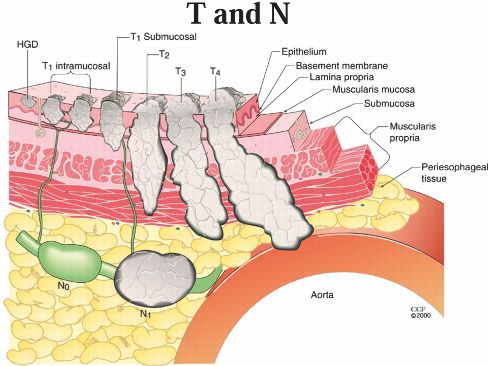 The TNM system is used by most hospitals and medical centers as the main cancer reporting method. This staging system will likely be used to describe the cancer upon diagnosis; that is, unless you have a particular type of cancer that requires the use of another staging system to describe it, such as brain, blood, or spinal cord cancers.
The TNM system is used by most hospitals and medical centers as the main cancer reporting method. This staging system will likely be used to describe the cancer upon diagnosis; that is, unless you have a particular type of cancer that requires the use of another staging system to describe it, such as brain, blood, or spinal cord cancers.
In the TNM system:
- T stands for the extent and size of the primary Tumor.
- N describes the number of nearby lymph Nodes that the cancer has spread to.
- M indicates whether or not the cancer has metastasized, or spread from the primary tumor to other parts of the body.
(An example of T and N staging of esophageal cancer courtesy of the Cleveland Clinics)
a. TNM staging is used to come up with Stages 0-IV
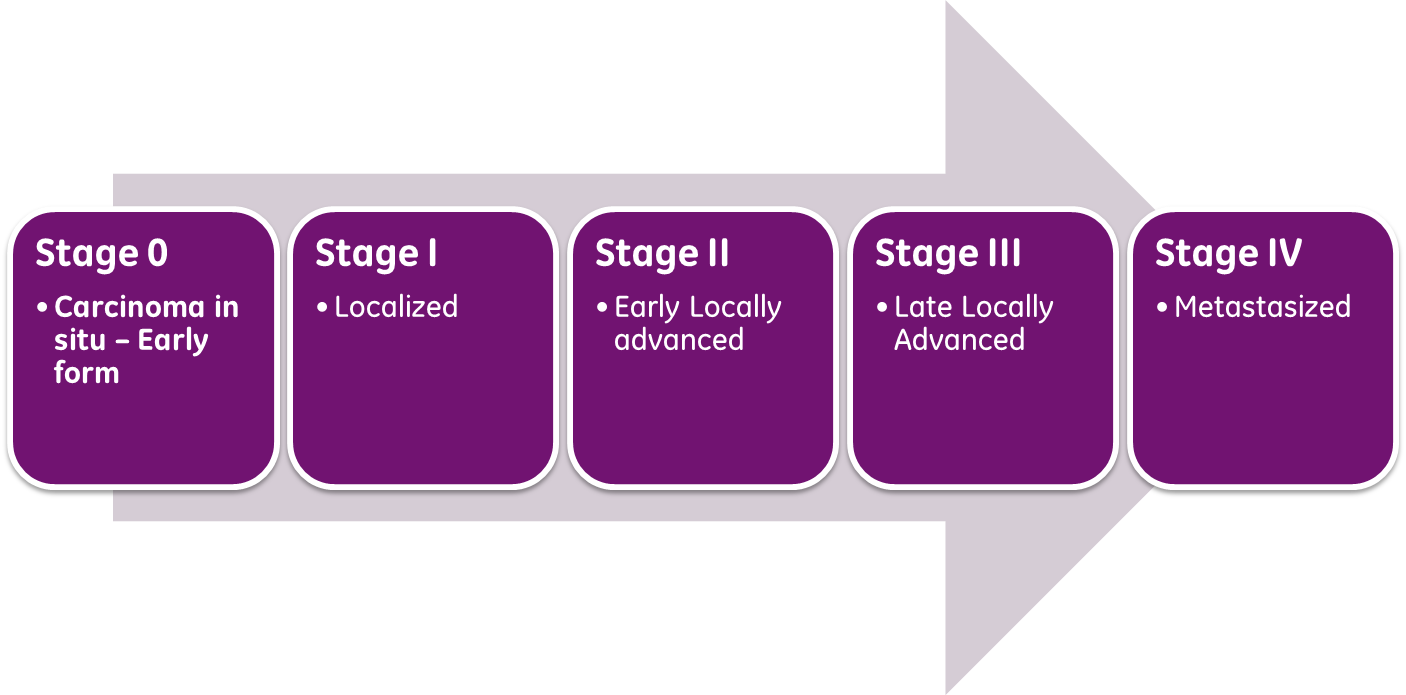
(Figure courtesy of Wikipedia)
The TNM system describes the cancer in great detail; however, the TNM combinations are often grouped into five less-detailed stages, which include:
- Stage 0 – Abnormal cells are present, but haven’t spread to nearby tissue.
- Stage I, II and III – Cancer is present, and the higher the number, the larger tumor and the more it has spread to nearby tissues.
- Stage IV – Cancer is present and has spread to distant parts of the body.
10. What is Metastatic Cancer?
When cancer spreads from the part of the body that it originated in to other parts of the body, it is referred to as metastatic cancer. Tumors that are formed by metastatic cancer cells are called metastatic tumors. When a patient is diagnosed with cancer, the oncologist will continuously assess the condition to see if it has spread, or metastasized.
This type of cancer has the same type of cancer cells as the primary cancerous tumor and is given the same name as the original cancer that you are diagnosed with. For instance, if your primary cancer begins in the lungs and metastasizes to the liver is referred to as metastatic lung cancer, not liver cancer.
Metastatic cancer cells look relatively similar to the cells of the original cancer, and the two types of cancers generally have the same molecular features. For example, the primary cancer and the metastatic cancer usually has the same expression of certain proteins or the presence of specific chromosome changes.
All cancers have the potential to form metastatic cancer, including brain, blood, lymphatic, lung, liver and breast cancer, though it is less common with some cancers than it is with others.
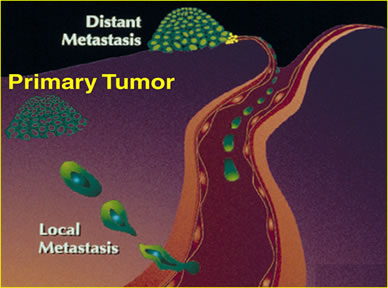
11. How Does Cancer Spread?
Primary cancer generally follows a series of steps when it spreads to other parts of the body. The theory has been called “seed and soil” and was first advanced more than a century ago. These steps include:
- Local invasion, in which the cells from the primary cancer spread to, or invade nearby normal tissue.
- Intravasation, which involves the cancer primary cancer cells invading and moving through the walls of the nearby lymph or blood vessels.
- Circulation occurs when the cancer cells move through the lymphatic system and the bloodstream to other parts of the body.
- Arrest and extravasation happens when the cells from the primary cancer stop moving in the capillaries, or small blood vessels, as a distant location. The cancer cells then invade the walls of the capillaries and move into the surrounding tissue, which is known as extravasation.
- Proliferation, which involves the multiplication of the cancer cells at the locations that the cancer has spread to, causing small tumors, or micrometastases to form.
- Angiogenesis, which occurs when micrometastases stimulate the growth of new blood vessels to use as a blood supply. A blood supply is a necessity for the newly developed micrometastases, as they need the blood supply to obtain the oxygen and the nutrients that are necessary for them to continue growing.
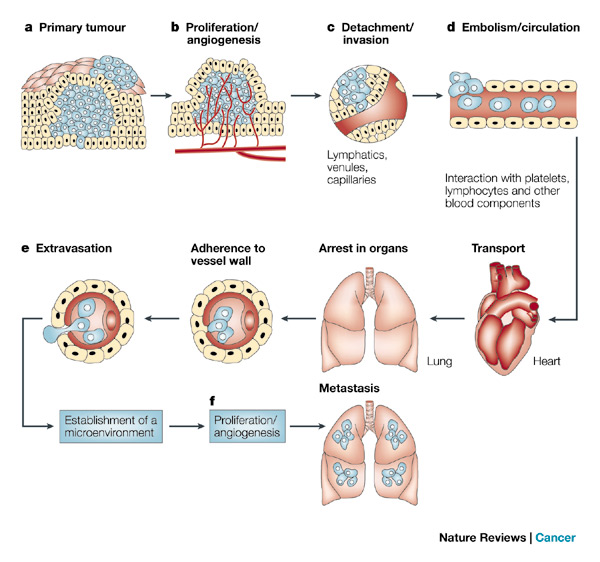
Cancer cell metastasis depends on a number of factors, including:
- the individual properties of the cancerous cells
- the properties of noncancerous cells, including the immune system cells present at the original location
- the properties of the cells it encounters in the lymphatic system or the bloodstream
- the final destination elsewhere in the body.
It is important to note that not all cancer cells have the ability to metastasize by themselves. Additionally, the noncancerous cells at the primary location may be able to block cancer cells from metastasizing. Though cancer cells may spread into another part of the body, that doesn’t mean that metastatic cancer will result.
12. What are The Different Types of Cancer?
The National Cancer Institute identifies several main categories of cancer types, relating to the primary origin of the cancer site:
- Central Nervous System Cancers
- Carcinoma
- Sarcoma
- Leukemia
- Lymphoma
- Myeloma
- Melanoma
- Other Tumor Types
a. Central Nervous System Cancers
Brain and spinal cord tumors are cancers of the central nervous system. There are several different types of tumors of the brain and spinal column. The name of the tumor is determined by where the tumor first formed in the central nervous system and what type of cells the tumor developed from. Some brain tumors are benign while others are malignant. Some benign brain tumors can be life-threatening.
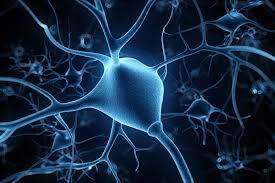
b. Carcinoma
This is the most common type of cancer. Carcinomas are formed by epithelial cells. The cells come in many different types. They form the skin, the tissues, and line the inside and outside of the internal organs.
There are four different types of epithelial cells where cancers can form.
- Adenocarcinoma: Cancers form in cells that produce fluids or mucus. These types of cells are also called glandular tissues. Cancers of the breast, prostate, and colon stem from adenocarcinomas.
- Basal: Cancers begin in the basal or lower layer of the epidermis, which is the outer layer of skin.
- Squamous: Squamous cells are right below the outer layer of skin. These cells also line many internal organs such as the lungs, kidney, bladder, stomach and intestines. Another name for squamous cells is epidermoid carcinomas.
- Transitional: Cancers also form in tissues called transitional epithelium, or urothelium. Many layers of epithelial cells form the transitional tissues. These cells form in the linings of ureters, bladder, some parts of the kidneys and in other organs as well.
c. Leukemia
Leukemias are cancers that start in the bone marrow, the area that produces the blood. With leukemia there are no tumors or lumps. Instead the blood has large amounts of abnormal white blood cells called leukemia cells or leukemic blast cells.
The abnormal blood cells grow in the blood and bone marrow, and squeeze out the normal cells. With a reduced amount of normal white blood cells, the body is less able to protect itself from infections. The low normal white blood count also makes it more difficult for the body to control bleeding or to get oxygen to all the tissues.
There are four main types of leukemia, which are based on how quickly the disease worsens (chronic or acute) and the type of blood cell the cancer originates in (myeloid or lymphoblastic).

d. Lymphoma
Lymphomas begin in the immune system or lymphocytes. Lymphocytes are the T cells and B cells of the immune system. The immune system uses white blood cells to fight diseases and infections in the body. With lymphoma, abnormal cells grow in the lymph nodes and lymph vessels. These abnormal cells may also appear in other parts of the body.
There are two types of lymphoma: Hodgkin lymphoma and Non-Hodgkin lymphoma.
- Hodgkin lymphoma has abnormal lymphocytes called Reed-Sternberg cells that grow from B cells.
- Non-Hodgkin lymphoma comprises many cancers that start in the lymphocytes. These cancers can grow from either B cells or T cells. Non-Hodgkin lymphoma can grow very fast or slowly.
e. Sarcoma
Sarcomas are cancers that begin in the bone and connective or soft tissues of the body. These include the bone, cartilage, blood vessels, lymph vessels, fat, muscles, and fibrous tissue such as ligaments and tendons. The most common bone cancer is osteosarcoma. The most common soft tissue cancers are leiomyosarcoma and Kaposi sarcoma.
f. Multiple Myeloma
Multiple myeloma is a cancer that begins in the plasma cells. Plasma cells are a type of immune system cell. Other names for this cancer are plasma cell myeloma and Kahler disease. Myeloma cells are the abnormal plasma cells. The abnormal plasma cells grow in the bone marrow and then create tumors throughout the body. Multiple myeloma is also called plasma cell myeloma and Kahler’s disease.
g. Melanoma
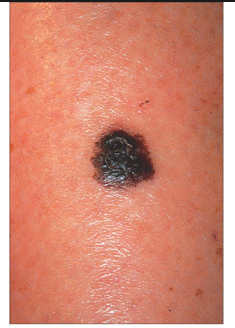 Melanoma is most commonly known as skin cancer. (Squamous cell and basal cell cancers are also skin cancer, but are referred to as nonmelanoma skin cancers.) In melanoma, the cancer starts in cells that eventually become melanocytes cells. These cells create melanin, the pigment for skin color, eye color and other pigmented tissues. For this reason, a person can have a melanoma of the eye, or intraocular melanoma.
Melanoma is most commonly known as skin cancer. (Squamous cell and basal cell cancers are also skin cancer, but are referred to as nonmelanoma skin cancers.) In melanoma, the cancer starts in cells that eventually become melanocytes cells. These cells create melanin, the pigment for skin color, eye color and other pigmented tissues. For this reason, a person can have a melanoma of the eye, or intraocular melanoma.
h. Other Tumor Types
- Neuroendocrine Tumors. These can be benign or malignant. These tumors start in the cells that produce hormones in the body. The tumor creates higher levels of hormones which results in a wide range of different symptoms. The hormones are then released into the blood based on signals from the nervous system.
- Carcinoid Tumors. These are a type of neuroendocrine tumor, and are often found in the gastrointestinal system, usually the small intestine or rectum. Carcinoid tumors grow at a slow rate, but can spread to the liver and other areas. These tumors may also release serotonin or prostaglandins, which causes carcinoid syndrome.
- Germ Cell Tumors. These tumors can be benign or malignant. They begin in cells that develop into eggs or sperm. These tumors can be found anywhere in the body.
 13. What food should cancer patients eat?
13. What food should cancer patients eat?
Cancer patients process food differently than healthy people. They also have nausea, loss of appetite and weight loss. To learn more about cancer nutrition check our article “Cancer Diet: The Ultimate Guide To Eating For Cancer Patients” and the “Cancer Nutrition: The Ultimate Guide To Eating For Cancer Patients“
Conclusion:
Cancer is frightening for most people. Whether you have been diagnosed or a family member or friend has, it’s a stressful time. By learning as much as you can about what cancer is, how it starts, how to reduce your risks, and what the best treatments are, you will have more control about what happens next.
Latest posts by Michel Choueiri (see all)
- Does cancer smell? Can people smell cancer? - September 28, 2016
- Does Cancer Itch? Which cancers cause itching? - August 19, 2016
- Cancer drug prices as high as a Ferrari… per year! - August 16, 2016


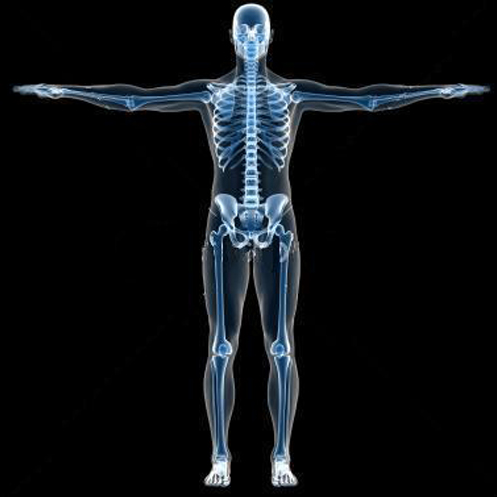
I have been surfing online more than three hours today, yet I never found any interesting article like yours.
It is pretty worth enough for me. In my opinion, if all website owners and bloggers made good content as you did,
the web will be a lot more useful than ever before.
Thank you so much Frank! It is feedback like yours that keeps us going forward and motivates us to write the best content we can. If you have suggestions that you would like us to write about, please send them to info@cancerdocs.com and we will put them on our priority list. Thanks again!